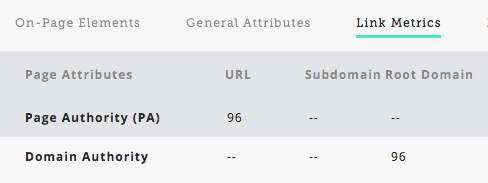Digital Public Relations (PR) is a strategy that aligns PR with SEO, inbound marketing and lead generation. The key difference between digital PR and traditional PR is that traditional PR is typically measured in impressions that a brand or company receives from media channels, while digital PR is measured by links back to a company’s website that lead to increased engagement and sales.
For additional help with public relations check out our Ultimate Guide to Public Relations for 2017.
The Power of Backlinks
Backlinks are among the most powerful signals that search engines measure when deciding what results to display when a search is made. The more popular the website is that links to your website, the higher your site will be rated by search engines. Digital PR focuses on getting links to your website on other websites with high domain authority–a metric that search engines use to assess the popularity of a website or page.
Links Don’t Lie
Backlinks are powerful SEO signals that search engines trust because they don’t lie. If a link to your website appears in, say, an article in Wired magazine (domain authority 90 out of 100), you get a lot more SEO credit than if a link to your website appears in, say, the Digital News Report (domain authority 63 out of 100).
Both traditional and digital PR are looking to reach powerful media influencers. Traditional PR relies on the influencer–a blogger or a publication with a large following–to spread the word about a company, brand, or product. Digital PR, on the other hand, is looking for the same influencers with the goal of getting more traffic to a website or landing page that will result in measurable site visits, leads and sales.
Lead Generation Goals
Traditional PR tends to focus on thought leadership and brand recognition, while digital PR tends to focus on lead generation. Many believe that digital PR is more valuable because it is more measurable. Thought leadership can be difficult to calculate, though the number of press mentions a company receives each month is a measurable outcome, thought leadership is in the mind of the target audience. PR that drives web traffic and can be traced in the number of referrals from the publication’s website, and the number of form fills for content offers or sales from ecommerce delivers a clearer business benefit.
Relevance to Brand
In the early days of SEO, search engines were less sophisticated and could not differentiate between junk backlinks and quality backlinks. Companies would issue press releases loaded with links to their website in order to grow their SEO cred. Then they tried flooding blog comment fields with links. Search engines eventually figured out how to separate junk backlinks from quality backlinks using domain authority and relevance of the linking site to the backlink. In other words, a backlink to a pizza restaurant from a well knowing automotive blog would be flagged as irrelevant to the blog’s readers and downgraded.
Measuring Site Authority
To measuring the domain authority of a publication’s website, you can use the free SEO Moz toolbar. When installed, it will display the page authority and domain authority in a bar at the top of your browser. Authority is ranked on a scale of 1 to 100, with 100 being the highest level of authority possible.

This can be a valuable tool as you decide what publications to target.
Digital PR Power
Digital PR can PR more powerful. In addition to generating thought leadership and brand recognition, quality press coverage can also play a key role in generating website traffic, leads and sales. To do so you need to target the right publications, bloggers and journalists with the authority and relevance that will positively influence your search rankings.




